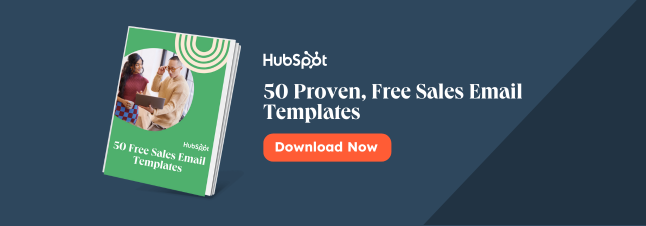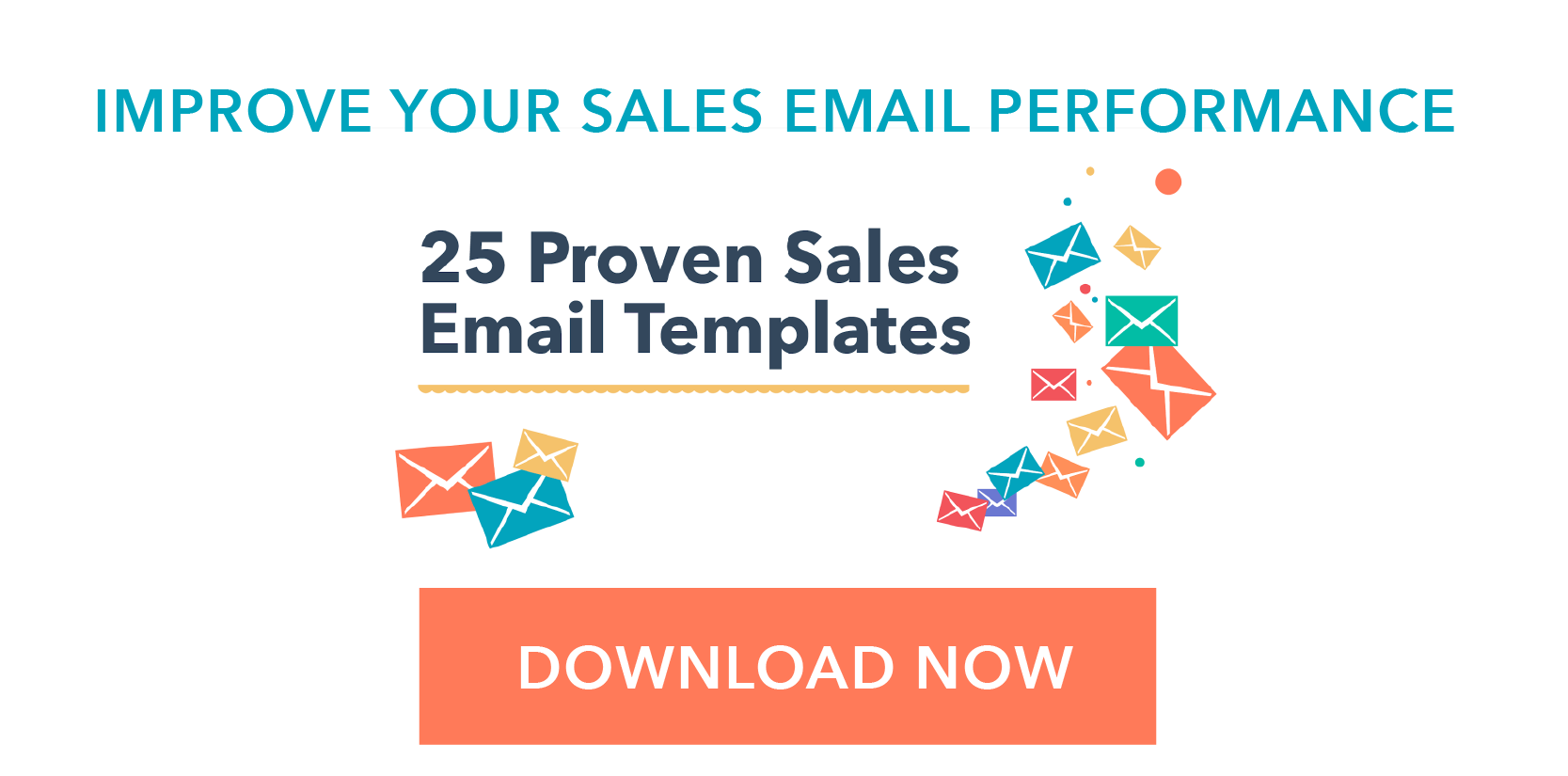Salespeople shouldn’t send “just checking in" emails for one very simple reason: They don’t work. Buyers feel like the rep is virtually poking them, making them reluctant to answer. Not only do “checking in messages rarely garner responses, they can even turn prospects against their senders.

But reps still need a way to get in touch with buyers who’ve gone dark. Enter these email templates.![Download Now: 25 Sales Email Templates [Free Access]](https://no-cache.hubspot.com/cta/default/53/be67aa79-8dbe-4938-8256-fdf195247a9c.png)
These “just checking in alternatives simultaneously add value to the prospect while putting the salesperson back on her radar. She’ll want to restart the sales conversation -- so it’s a win-win.
Here are some templates to suit specific scenarios and challenges you might run into with prospects and clients. Want to skip to a specific type of template? Use the links below:
If a Trigger Event Has Occurred
Touching Base Email Sample [Templates]
If They Never Responded
1. Send them a short piece of actionable advice.
One common mistake salespeople make is to point out an error a prospective customer has made. For example, "I saw your most recent product launch. Here's where I think you could improve ...." This is insulting and assumptive. Try a more relaxed and suggestive approach instead.
Template:
Hi [prospect]
You likely deal with [business pain], so I thought I’d share a quick tip many of my clients have found helpful: [1-2 sentence actionable piece of advice].
I have a few more ideas around [improving X]. Let me know if you’re interested in hearing them.
Best,
[Your name]
Example:
Hi Sofra,
You likely deal with customer no-shows, so I thought I’d share a quick tip many of my clients have found helpful: Ask for credit cards to hold reservations. This helped Coi halve their no-show rate.
I have a few more ideas around mitigating canceled tables. Let me know if you’re interested in hearing them.
Best,
Jamie
2. Send over a longer how-to guide and offer to follow up in person if they want.
If knowledge is power and sharing is caring, this approach is a can't-lose for you and your prospects. You'll educate and help them with one simple email.
Template:
Hi [prospect],
Do you [deal with X/want to improve Y]? Here’s an ebook about [dealing with X/improving Y].
There’s a lot of invaluable advice in there — you might find [specific tip or section] especially helpful. If you’d like to discuss these pointers or anything else around [topic], let’s set up a call.
Best,
[Your name]
Example:
Hi Jordan,
Would you like to your new salespeople to get off ramp faster? Here’s an ebook about shortening ramp time.
There’s a lot of invaluable advice in here — check out page 30 for an in-depth training cadence. If you’d like to discuss these pointers or anything else around sales hiring and training, let’s set up a call.
Best,
Cara
3. Point out a weakness in their business that should be fixed.
I know what you're thinking: "You just told me not to do this!" Well, when executed correctly, this approach can have a major impact. In the example below, the writer uses gentle language to avoid pushiness.
Template:
Hi [prospect],
[Company] sounds like it’s doing well — just stumbled across this quote on [Glassdoor/Yelp/Angie’s List/other third-party review site] from one of your [employees/customers]:
[1-2 sentence quote].
[Company] would be even stronger if you [fixed X]. Would you like to follow up about this on a call?
Best,
[Your name]
Example:
Hi Oleana,
Trusthealth sounds like it’s doing well -- just stumbled across this quote on Glassdoor from one of your employees: "This is the best, most supportive office I’ve ever experienced."
Your company might be even stronger if you offered employee mentorship programs, which typically increase individual retention by 23%. Would you like to follow up about this on a call?
Best,
Kendall
4. Respond to a social message, then follow up with more resources.
You never want to be that salesperson pitching someone in the comments section of a LinkedIn post. Engage with your prospect, yes. But then take the conversation offline and follow up with valuable feedback.
Template:
Hey [prospect],
Great post on [social network] about [topic]. Your comment about X was particularly astute -- [additional comment].
Here are a couple resources about [topic] you might find interesting:
- Link 1
- Link 2
[Connection between resources and value salesperson can offer].
Let me know what you think,
[Your name]
Example:
Hey Annette,
Great post on LinkedIn about banking software. Your comment about fraud detection was particularly astute.
Here are a couple resources about online financial programs you might find interesting:
- Link 1
- Link 2
They cover several unique strategies for preventing cybercrime.
Let me know what you think,
Mark
5. Answer one of their questions on an online forum, then follow up with more resources.
Similarly, don't use online forums like Reddit or Quora to close a deal. On many of these platforms, pitching is not allowed and could get you booted as a user. Instead, use them as a first touch and follow up offline.
Template:
Hi [prospect],
Great [social network] question about X. [1-2 sentence answer]. (Make sure you link to the post, especially if it’s more than one day old.)
Here are a couple resources about X that will also help:
- Link 1
- Link 2
Let me know if you’d like to discuss this on a call,
[Your name]
Example:
Hi Tim,
Great Twitter question about finding freelancers. Many of the startups I work with hire college students to freelance for them — the students get experience, and the companies get good content at an affordable rate.
Here are a couple other sites you might find useful:
- Upwork (a freelance marketplace)
- Inbound.org (an online community with many active freelancers)
Let me know if you’d like to discuss this or get a few more suggestions on a call.
Sydney
6. Send them a blog post your company has just published.
If a prospect downloads a certain piece of your content, follow up with other valuable resources they might find valuable.
Template:
Hi [prospect],
You [previously downloaded or read X piece of content/likely deal with Y problem/belong to Z industry], so you might get value from this blog post my company just published: [title].
If you’re in a rush and can’t read it all, [tip, section X] seems like it’d be particularly useful for [company].
Best,
[Your name]
Example:
Hi Amanda,
You previously downloaded our guide to designing an intranet, so you might get value from this blog post my company just published containing interviews with the winners of Nielsen’s 10 Best Intranets of 2016 awards.
If you’re in a rush and can’t read it all, example #4 seems like it’d be particularly useful for Cloudius, since it features another energy firm.
Best,
Julian
7. Recommend an event in their area.
Highlight local industry events and tell them you'd love to see them there. You've provided your prospect with a valuable networking event and set yourself up to meet in person.
Template:
Hi [prospect],
What are you doing on [date]? Noticed [event] will be taking place in your area — it seems like a great fit for you because [value of event].
Here’s the link to the website if you want to check it out: [link].
Best,
[Your name]
Example:
Hi Jon,
What are you doing on October 3? Noticed there’s an IT professionals meetup on that day in Framingham — it seems like a great opportunity to network and potentially recruit more folks for Kerchief.
Here’s the link to the website if you want to check it out: [link].
Best,
Harold
8. Invite them to an upcoming webinar or educational event your company is hosting.
Keep them in the know about events that will help them excel at their job. You'll immediately build trust and add value to their working lives.
Template:
Hi [prospect],
Last time we spoke, you mentioned you’re currently focused on [improving X/solving Y/refining Z]. Would you like to attend the [webinar/event] that [rep’s company] is hosting?
The speakers, [name] and [name], will be delving into [topic 1 and topic 2].
It’s taking place on [date] — here’s the link to sign up.
I hope to see you there.
Best,
[Your name]
Example:
Hi June,
Last time we spoke, you mentioned you’re currently focused on incorporating iPads into the classroom. Would you like to attend the webinar that CurrentFront is hosting?
The speakers, Hakan Staff from Harvard University and Sheila Thomas from Yale University, will be delving into tech-based learning models.
It’s taking place on January 14 — here’s the link to sign up.
I hope to see you there.
Best,
Yusef
9. Send them a book, podcast, newsletter, or publication recommendation.
Are they an avid reader who's always sharing the latest industry book recommendation online? Return the favor and share your favorite new industry resources.
Template:
Hey [prospect],
Judging by your [LinkedIn/Twitter/other social network] account, you’ve got a great eye for industry content. The [article/ebook/podcast] you posted about X was especially useful.
Have you heard of [related publication/book/newsletter/podcast]? If you liked X, you’ll probably enjoy Y. I recommend starting with [issue/chapter/edition/episode] Z: [linked].
Let me know what you think,
[Your name]
Example:
Hey Terry,
Judging by your LinkedIn account, you’ve got a great eye for industry content. The podcast you posted about the rise of consumer loyalty programs was especially useful.
Have you heard of the Blue Matter podcast? If you like Shop It To Me, you’ll probably enjoy Blue Matter. I recommend starting with the episode on in-store promotions.
Let me know what you think,
Darcy
10. Call attention to something their competitor is doing well and ask how they plan to address it.
Knowing what your competitor is doing well is one thing. Having someone outside your business tell you what your competitor is doing well is another. This might just be the kick your prospect needs to make a change.
Template:
Hi [prospect],
I saw that [competitor] has been doing well in [X area] lately. Do you have any plans in place for addressing it?
I have some ideas — if you want to hear them, let’s schedule a call.
Best,
[Your name]
Example:
Hi Sean,
Gladup has been aggressively hiring new developers. The last time we spoke, you mentioned that you’re also trying to grow your team — do you have any plans in place for remaining competitive in the Chicago area?
I have some ideas — if you want to hear them, let’s schedule a call.
Best,
Sarah
11. Send a breakup email to close the loop.
Sometimes, they're just not that into you. Here's what to do when that's the case.
Template:
Hi [prospect],
I haven’t heard back from you, so you must be busy or no longer interested in [achieving X]. Mind if I close your file?
Thanks,
[Your name]
Example:
Hi Liam,
I haven’t heard back from you, so you must be busy or no longer interested in expanding to the San Jose area. Mind if I close your file?
Thanks,
Kevin
To Reconnect with a Client
1. Share an article relevant to their industry or profession.
Show that you're invested in their industry, their job, and their bottom line. You'll immediately build trust.
Template:
Hey [client],
Since you work in [X role or industry], you might be interested in this article about [X role or industry]. The author makes an interesting point about [detail of article].
Have you considered any changes related to [topic of article]?
Best,
[Your name]
Example:
Hey Calum,
Since you work in home security, you might be interested in this New York Times article about new “smart security systems. The author makes an interesting point about property owners’ increasing vulnerability to hackers.
Has your firm considered any changes related to hacking?
Best,
Claire
2. Reference a relevant blog post they just published.
Flattery might just get you in the door. Just make sure you're speaking to specific things you liked about the post. A generic, "I loved your article on 'Just Checking in Alternatives,'" comes off as cold and insincere. Instead, say, "I really liked your most recent article on 'Just Checking in Alternatives.' Your suggestion to highlight specific things you found valuable about an article when flattering a prospect's most recent blog."
Template:
Hey [client],
Excellent post on [topic]. Your [comment/suggestion/insight] on X stood out for [reason].
Have you considered writing about Y as a follow-up post?
Best,
[Your name]
Example:
Hey Dave,
Excellent post on the state’s real estate market. Your argument that restaurants are driving the local retail landscape was particularly persuasive — most investors aren’t looking carefully enough at those stats.
Have you considered writing about the generational shift into cities as a follow-up post?
Best,
Sarek
3. Touch base about some of their older, still-relevant content
Referencing older content is a good way to let your clients know that you are — and have been — legitimately interested in their business, industry, and perspectives.
That being said, try to avoid digging into content that might be irrelevant or outdated. Only reference articles that were published within the last two or so years. You don’t want to lead them to believe you aren’t staying on top of trends in their industry.
Template:
Hi [client],
I revisited one of your older blog posts about [X subject] earlier today. I was impressed by how relevant, comprehensive, and compelling it still is. It really speaks to your understanding of [Y overarching topic].
I was wondering if we could find some time to reconnect and see how your perspective on the topic has developed since the post was published.
Best,
[Your name]
Example:
Hi David,
I revisited one of your older blog posts about unikernels, containers, and the future of microservices architectures earlier today. I was impressed by how relevant, comprehensive, and compelling it still is. It really speaks to the your understanding of virtualization.
I was wondering if we could find some time to reconnect and see how your perspective on the topic has developed since the post was published.
Best,
Jenny
4. Invite them to an upcoming webinar or educational event your company is hosting.
Keep them in the know about events that will help them excel at their job. You'll immediately build trust and add value to their working lives.
Template:
Hi [prospect],
Last time we spoke, you mentioned you’re currently focused on [improving X/solving Y/refining Z]. Would you like to attend the [webinar/event] that [rep’s company] is hosting? The speakers, [name] and [name], will be delving into [topic 1 and topic 2].
It’s taking place on [date] — here’s the link to sign up.
I hope to see you there.
Best,
[Your name]
Example:
Hi June,
Last time we spoke, you mentioned you’re currently focused on incorporating iPads into the classroom. Would you like to attend the webinar that CurrentFront is hosting? The speakers, Hakan Staff from Harvard University and Sheila Thomas from Yale University, will be delving into tech-based learning models.
It’s taking place on January 14 — here’s the link to sign up.
I hope to see you there.
Best,
Yusef
5. Bring up a common challenge your buyers face and ask if they’re experiencing it.
Do your research, understand what makes your prospects tick, and know the right questions to ask to open a conversation.
Template:
Hi [prospect],
The clients I work with are often face [business challenge]. Has [company] experienced anything similar?
If so, I have several ideas that might help — like [tip #1]. If you’d like to hear more, I’m free for a call on [date and time] or [date or time].
Best,
[Your name]
Example:
Hi Hayle,
The clients I work with are often struggling to find creative, low-cost ways of engaging with their local communities. Has Shake Advertising experienced anything similar?
If so, I have several ideas that might help -- like organizing an employee volunteer program. If you’d like to hear more, I’m free for a call on Thursday at 4 p.m. or Friday at 10:30 a.m.
Best,
Claire
5. Bump your email to the top of their inbox using the “buried email technique.
A classic, non-annoying way to remind your prospect you exist -- because, sometimes, they really were just busy.
Template:
Example:
6. Ask if they’re still interested in achieving X goal, then provide a suggestion for how to get there.
Tactical advice for how your prospect can achieve their goals is always appreciated. It also demonstrates that you understand their industry and the challenges they face.
Template:
Hey [prospect],
Are you still interested in achieving X goal? [Customer] saw [results] by trying [suggestion]. Might be worth a try for [prospect’s company].
If you’d like to know exactly how [customer] did it, we can set up a call on [date and time] or [date and time].
Best,
[Your name]
Example:
Hey Susan,
Are you still interested in decreasing employee absenteeism? Full Trade raised team-wide attendance by 5% in three months by tying performance pay to attendance. Might be worth a try for Beeline.
If you’d like to know the specifics of Full Trade’s program, we can set up a call on Tuesday at 11 a.m. or Wednesday at 4 p.m.
Best,
Gary
7. Reach out about specific shifts or new challenges in their industry.
Referencing new, emerging challenges in a client's industry is a good way to show you have a grasp on what their business is dealing with. It can also help you get a picture of what they and similar companies are going to deal with going forward.
Template:
Hi [client],
It’s been a while since we’ve talked. There have been some big shifts and shake ups in [X industry] since we last spoke, [including Y event]. I think it would be great if we could find some time to discuss how [X industry/their business is changing].
I’ve attached a link to my calendar. Let me know a good time for us to hop on a call.
Best,
[Your name]
Example:
Hi Andy,
It’s been a while since we’ve talked. There have been some big shifts and shake ups in cybersecurity since we last spoke — particularly CCPA finally going into effect. I think it would be great if we could find some time to discuss what this means for smaller cybersecurity consulting firms like yours and the industry as a whole.
I’ve attached a link to my calendar. Let me know a good time for us to hop on a call.
Best,
[Your name]
If a Trigger Event Has Occurred
1. Congratulate a potential decision maker on a promotion.
This is another example of flattering your prospect. And you can use their promotion as an opportunity to introduce your product/service as a way for them to make an immediate splash in their new role.
Template:
Hi [prospect],
Congratulations on your promotion to [role]. You’ve done some impressive things in your tenure at [company] — including [achievement 1] and [achievement 2] — so it’s well-deserved.
Have you put any thought into how you’ll achieve [business goal]? I have a few suggestions.
Best,
[Your name]
Example:
Hi Emily,
Congratulations on your promotion to editor-in-chief. You’ve done some impressive things in your tenure at Fantasia — including raising print circulation and rolling out a virtual reality program — so it’s well-deserved.
Have you put any thought into how you’ll find VR specialists? I have a few suggestions.
Best,
Andy
2. Reach out to a decision maker after a blocker leaves the company.
Don't let one person close the door on future deals at a given company. If you see a blocker take a new job on LinkedIn, use that as an opportunity to try again.
Template:
Hi [prospect],
In [month, year], we talked about your difficulties with [pain point], and how [offering] could help [achieve specific goal] over [specific timeframe].
I know there have been a few changes at [prospect’s company] since then — are you interested in doubling down on [goal] again?
Best,
[Your name]
Example:
Hi Jody,
In February, we talked about your difficulties with inefficient driver routes, and how the MPH software could help reduce team mileage by 30% and improve worker retention by 5% in 6 months.
I know there’s been a few changes at Jantam since then — are you interested in doubling down on this efficiency again?
Best,
Todd
3. Reach out to a new C-level executive.
Show that you've followed their career and know what they care about and are good at. Asking about their strategy is a great way to get to the heart of what C-levels care about.
Template:
Hi [prospect],
Congratulations on your new role at [new company]. At your old company you made [X innovative move] that really helped [Y metric]. When I previously spoke with someone at your company, they were doing things [X way] — how are you thinking about this strategy?
Best,
[Your name]
Example:
Hi Sheryl,
Congratulations on your new role at Waypointer. At your old company you completely revamped the mid-market strategy — doubling your revenue from that channel. When I previously spoke with someone at your company, they were focusing on enterprise deals. How are you thinking about Beanery’s mid-market approach going forward?
Best,
Jose
4. Congratulate them on a funding round.
Know that they're likely getting lots of emails and phone calls, if they've just announced a round. So make sure your touch base is unique, timely, and personalized.
Template:
Hey [prospect],
Since the last time [we talked, I reached out], you’ve closed a/an $X round of funding. Congratulations! This is probably one of the busiest periods of your company’s life — have you thought about how you’ll [accomplish X goal]?
If that’s on your agenda, let’s set up a quick call. I have a few ideas that may help.
Best,
[Your name]
Example:
Hey Vincent,
Since the last time I reached out, you’ve closed a $5M round of funding. Congratulations! This is probably one of the busiest periods of your company’s life — have you thought about how you’ll scale your onboarding process?
If that’s on your agenda, let’s set up a quick call. I have a few ideas that may help.
Best,
Simon
5. Ask whether newly created positions relevant to your product reflect new company initiatives.
Any time you see a company hiring or changing the structure of their company, it's a good time to reach out and see if their priorities have shifted to include your product/service in their periphery.
Template:
Hi [prospect],
Congratulations on the creation of [role related to your product]. Usually this means [business goal] is now a priority.
I thought you might be interested in finding out how we helped [similar company] get going quickly in their new direction – without any of the typical glitches.
If you’d like to learn more, let’s set up a quick call. How does [date and time] look on your calendar?
Best,
[Your name]
Example:
Hi Rafael,
Congratulations on the creation of a branded content role. Usually this means securing corporate partnerships is now a priority.
I thought you might be interested in finding out how we helped May Media establish guidelines and price points while generating interest with their target partners.
If you’d like to learn more, let’s set up a quick call. How does July 30th at 2:30 p.m. look on your calendar?
Best,
Gina
If You Lost the Deal
1. Check how things are going a month after implementing a competitor’s product.
Don't be forceful or arrogant. Simply check in and ask how they're doing. If the answer is, "We're great! Loving the new product." reply with, "I'm glad to hear it. If that ever changes, I'd love another chance to earn your business."
Template:
Hey [prospect],
It’s been a month since you signed on with [competitor]. How are things going?
Best,
[Your name]
Example:
2. Check how things are going as their contract with a competitor is winding down.
This is another great time to jump in and take their temperature, introduce new features your product has unveiled, and tell them how you're different.
Template:
Hi [prospect],
Last time we chatted, you mentioned your contract with [competitor] is winding down in [month]. How’s everything going with [product]?
Also, I came across a [blog post/ebook/guide] on [topic] you might find helpful: [link].
Looking forward to hearing from you,
[Your name]
Example:
Hi Ethan,
Last time we chatted, you mentioned your contract with Banyan is winding down in June. How’s everything going with their platform?
Also, I came across a post on Google Chrome keyboard shortcuts your team might like — know you guys are big Chrome fans [link].
Looking forward to hearing from you,
Shruthi
Salespeople often default to the standard “touching base message because they’re in a rush. With these follow-up templates, writing a thoughtful, personalized, helpful email takes mere minutes — with potentially enormous payoff.
Ghosting prospects a problem? Check out these email templates for no show prospects.
Editor's note: This post was originally published May 15, 2019 and has been updated for comprehensiveness.




![How to Find Almost Anyone’s Email Address, Without Being Creepy [+Expert Tips]](https://www.hubspot.com/hubfs/132_Find%20Email%20Address.jpg)








